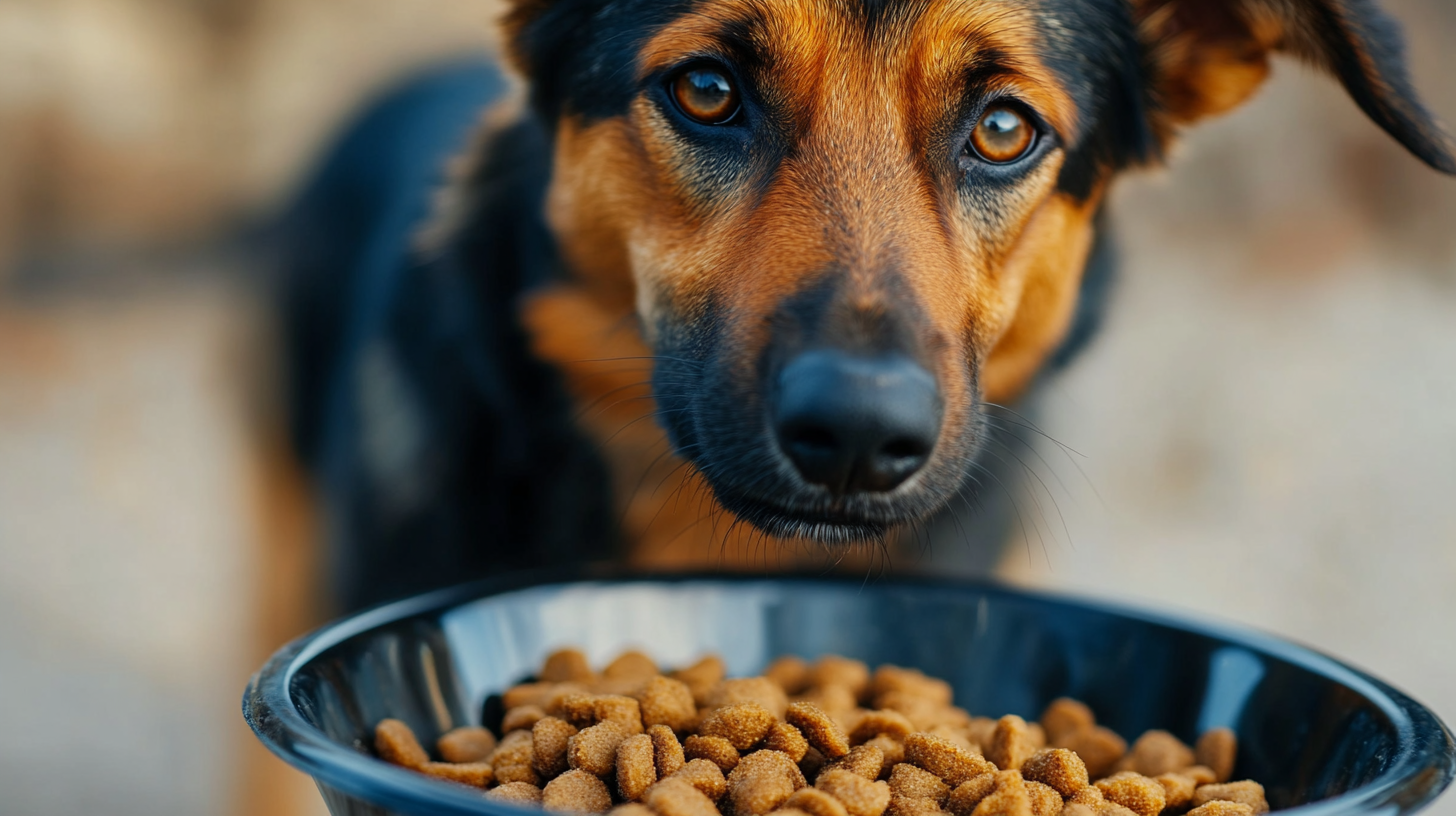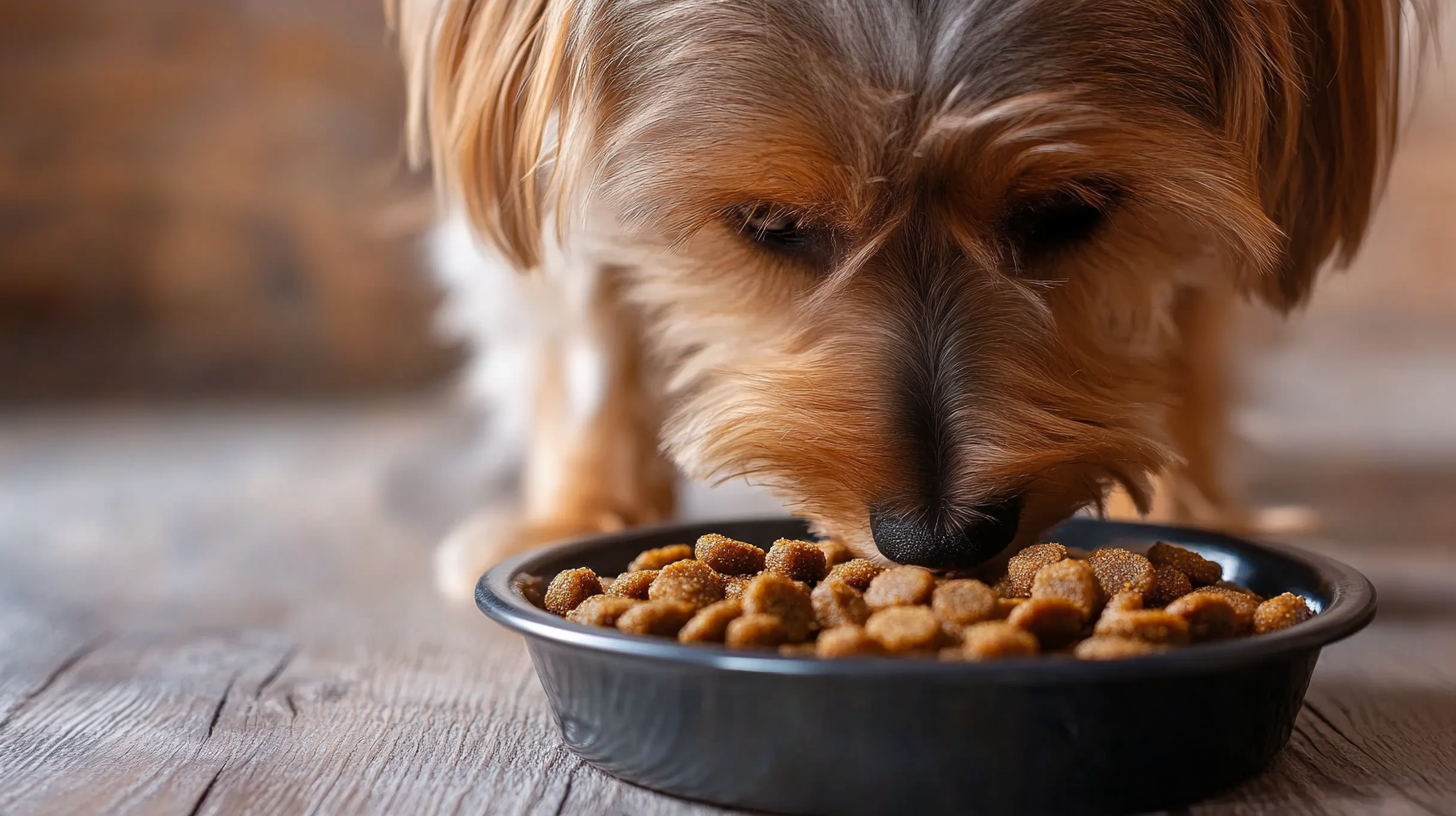In recent years, the pet food industry has witnessed a significant shift towards specialized diets, with a growing emphasis on grain free wet dog food. According to a report by the Association of American Feed Control Officials (AAFCO), the grain-free pet food market has expanded dramatically, showcasing a nearly 20% increase in utilization among dog owners in just the last few years. This dietary trend is attributed to various factors, including rising concerns regarding food allergies, sensitivities, and overall canine health. Grain free wet dog food offers a tailored nutritional profile that not only caters to individual dietary requirements but also enhances palatability, making it an appealing choice for picky eaters. As we explore the advantages of this innovative diet, it becomes evident that understanding the specific needs of our canine companions can lead to better health outcomes and improved quality of life.

Grain-free wet dog food has gained popularity among pet owners for its potential health benefits tailored to the individual needs of dogs. One of the key advantages is that it often contains higher protein levels, using meat as the primary ingredient rather than grains. According to a 2021 report by the Association of American Feed Control Officials (AAFCO), a diet rich in animal protein supports muscle development and overall vitality in dogs. Additionally, grain-free options reduce the risk of allergies and sensitivities, which can be prevalent in certain breeds. A study published in the Journal of Veterinary Internal Medicine found that dogs with known grain allergies responded positively to grain-free formulations, experiencing fewer gastrointestinal issues and skin irritations.
When considering grain-free wet dog food, pet owners should keep in mind a few tips. First, always check the ingredient label to ensure that the food contains high-quality animal proteins and healthy fats. Look for omega-3 and omega-6 fatty acids, which promote a shiny coat and healthy skin. Second, introduce new food gradually to avoid digestive upset, especially if transitioning from a grain-inclusive diet. Lastly, consult with a veterinarian to tailor your dog's diet to their specific health needs, breed, and activity level for optimal nutrition.
| Nutritional Component | Benefits | Recommended Dog Breeds |
|---|---|---|
| High Protein | Supports muscle development and maintenance. | Active breeds like Border Collies, German Shepherds. |
| Rich in Omega Fatty Acids | Promotes healthy skin and coat. | Breeds prone to skin issues like Bulldogs, Labrador Retrievers. |
| Limited Ingredients | Minimizes allergic reactions and sensitivities. | Dogs with food intolerances like Boxers, Dachshunds. |
| Taurine Enrichment | Supports heart health and function. | Breeds at risk for heart disease like Golden Retrievers, Cocker Spaniels. |
| Hydration | Helps keep dogs hydrated due to higher moisture content. | Older dogs or those with urinary issues. |
As pet owners increasingly seek ways to improve their dogs' health, grain-free diets have emerged as a popular solution, particularly for those with food sensitivities. According to a report by the Association of American Feed Control Officials (AAFCO), approximately 15% of dogs experience food allergies, with grains being one of the primary culprits. This growing concern has prompted many to opt for grain-free wet dog food, which often features alternative carbohydrates such as sweet potatoes, peas, or lentils. These substitutes not only avoid common allergens but also provide essential nutrients and promote better digestion.
Research indicates that grain-free diets may also offer benefits beyond just allergen avoidance. A study published in the Journal of Veterinary Internal Medicine showed that dogs with food sensitivities often exhibited reduced gastrointestinal issues after being placed on grain-free diets. Furthermore, wet dog food formulations tend to have higher moisture content, ensuring that hydration needs are met while offering palatable options for picky eaters. With tailored nutrition plans that cater to individual canine needs, grain-free wet dog food is becoming a vital component in the diets of sensitive dogs, promoting overall health and vitality.
When selecting grain-free wet dog food, choosing the right ingredients is crucial for maximizing your dog's health and well-being. High-quality protein sources should be at the forefront of your decision. According to the Association of American Feed Control Officials (AAFCO), a protein-rich diet can significantly improve a dog's muscle mass and energy levels. Look for real meat as the first ingredient, as it contains essential amino acids that aid in muscle development and overall vitality.
In addition to protein, it’s essential to incorporate healthy fats and a variety of fruits and vegetables into the diet. The Pet Food Institute reports that omega-3 and omega-6 fatty acids play a vital role in maintaining skin health and a shiny coat. Also, ingredients like sweet potatoes and green peas not only provide necessary carbohydrates but are also packed with vitamins and antioxidants that support your dog's immune system.
Make sure to avoid artificial additives and fillers, as these can diminish the nutritional value of the food and may lead to long-term health issues. Prioritizing whole and natural ingredients helps ensure that your furry friend receives a balanced diet suited to their specific needs.
 The impact of grain-free wet dog food on energy levels and coat health is a topic of growing interest among pet owners and veterinarians. According to a report by the Pet Food Manufacturers Association, nearly 30% of dog owners are now opting for grain-free diets, believing these foods can enhance their pets’ vitality. Grain-free formulations often replace traditional grains with high-quality protein sources and wholesome vegetables, which can contribute to more stable energy levels. Studies have indicated that dogs on a grain-free diet exhibit reduced fluctuations in blood sugar, promoting sustained energy throughout the day, allowing them to engage in more activities and play.
The impact of grain-free wet dog food on energy levels and coat health is a topic of growing interest among pet owners and veterinarians. According to a report by the Pet Food Manufacturers Association, nearly 30% of dog owners are now opting for grain-free diets, believing these foods can enhance their pets’ vitality. Grain-free formulations often replace traditional grains with high-quality protein sources and wholesome vegetables, which can contribute to more stable energy levels. Studies have indicated that dogs on a grain-free diet exhibit reduced fluctuations in blood sugar, promoting sustained energy throughout the day, allowing them to engage in more activities and play.
Moreover, the benefits of grain-free diets extend to coat health. A study published in the Journal of Animal Science noted that dogs consuming diets rich in omega-3 and omega-6 fatty acids—a common component in many grain-free wet foods—showed a significant improvement in skin hydration and coat shine. The absence of grains also reduces the risk of allergies and sensitivities, which can lead to dermatitis and dull fur. As pet parents become more informed about the nutritional needs of their dogs, grain-free wet dog food emerges as a compelling option to enhance both energy levels and coat quality.
When it comes to choosing grain-free wet dog food, several brands have distinguished themselves in 2024 by offering exceptional nutrition tailored to meet various canine needs. For instance, certain brands are noted for their quality protein sources and limited ingredient choices, making them ideal for dogs with food sensitivities or allergies. This customization in nutrition is essential, as it helps maintain overall health while keeping allergens at bay, ensuring that every dog can enjoy their meals without the risk of adverse reactions.

Among the standout options, some brands provide superior protein content, which is crucial for building and maintaining strong muscles in active dogs. Additionally, other brands highlight their focus on nutrient-rich recipes, combining delicious flavors with health benefits. These grain-free wet food alternatives not only promote better digestion but also cater to dogs with sensitive stomachs, proving that pet owners no longer have to compromise on quality or variety when it comes to feeding their furry companions.
